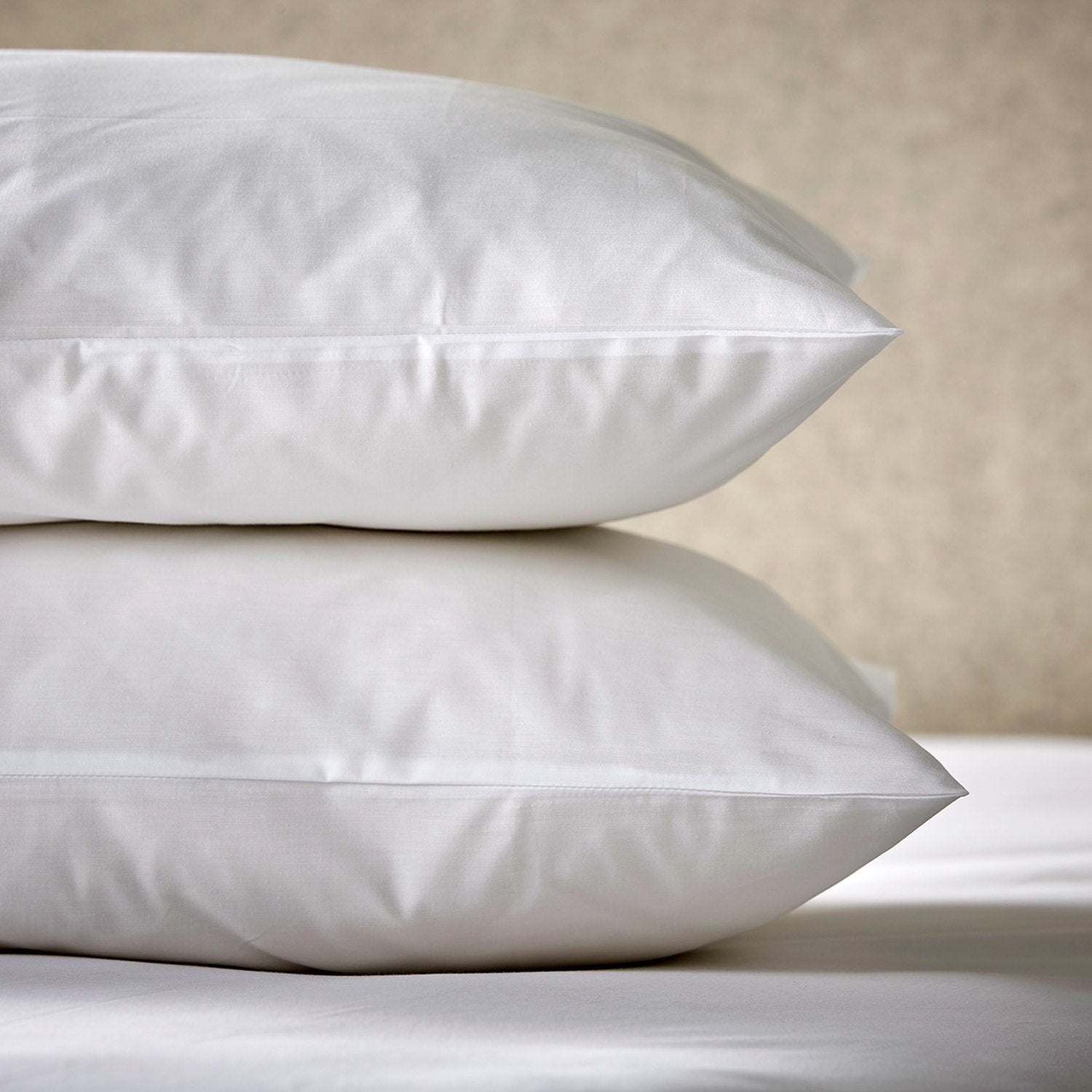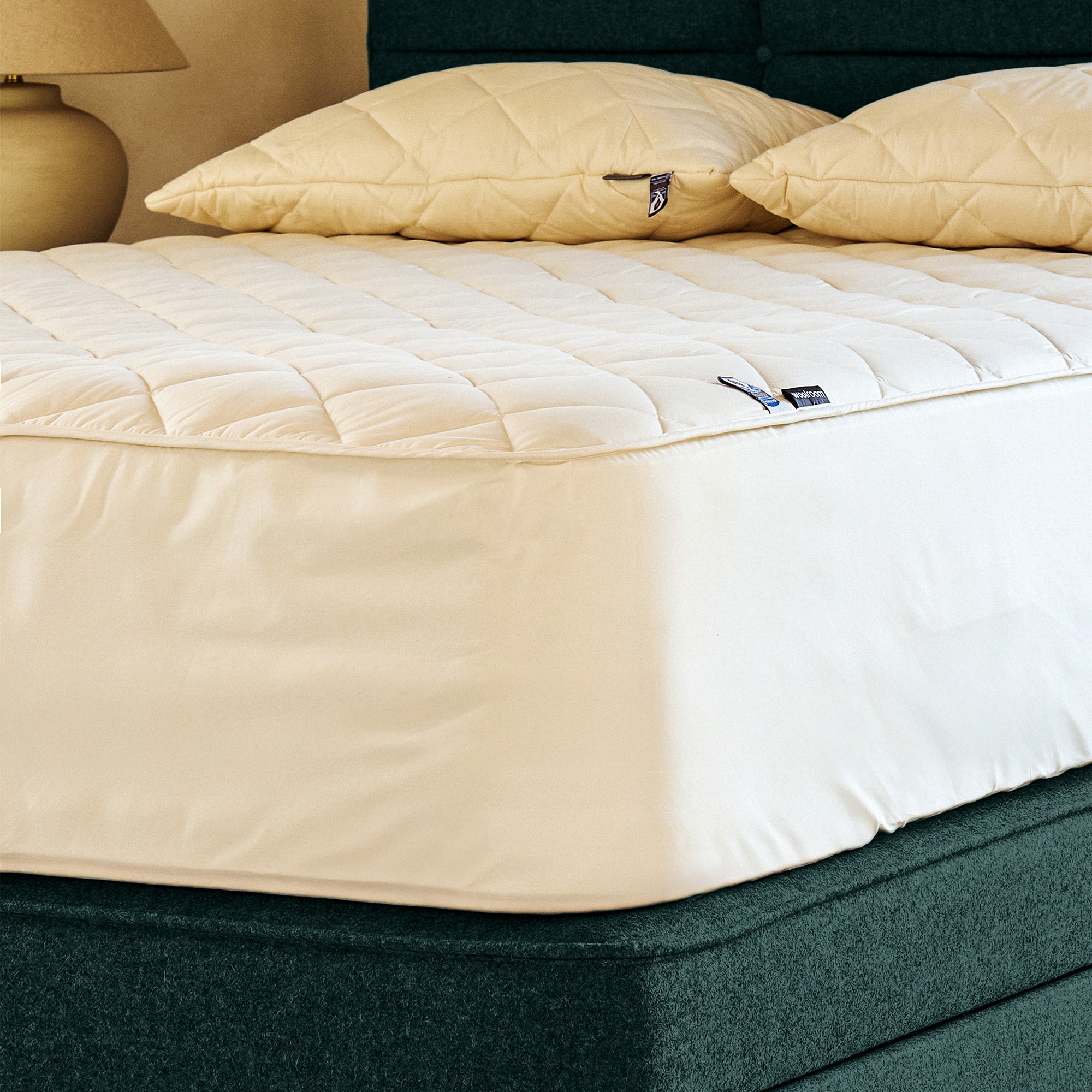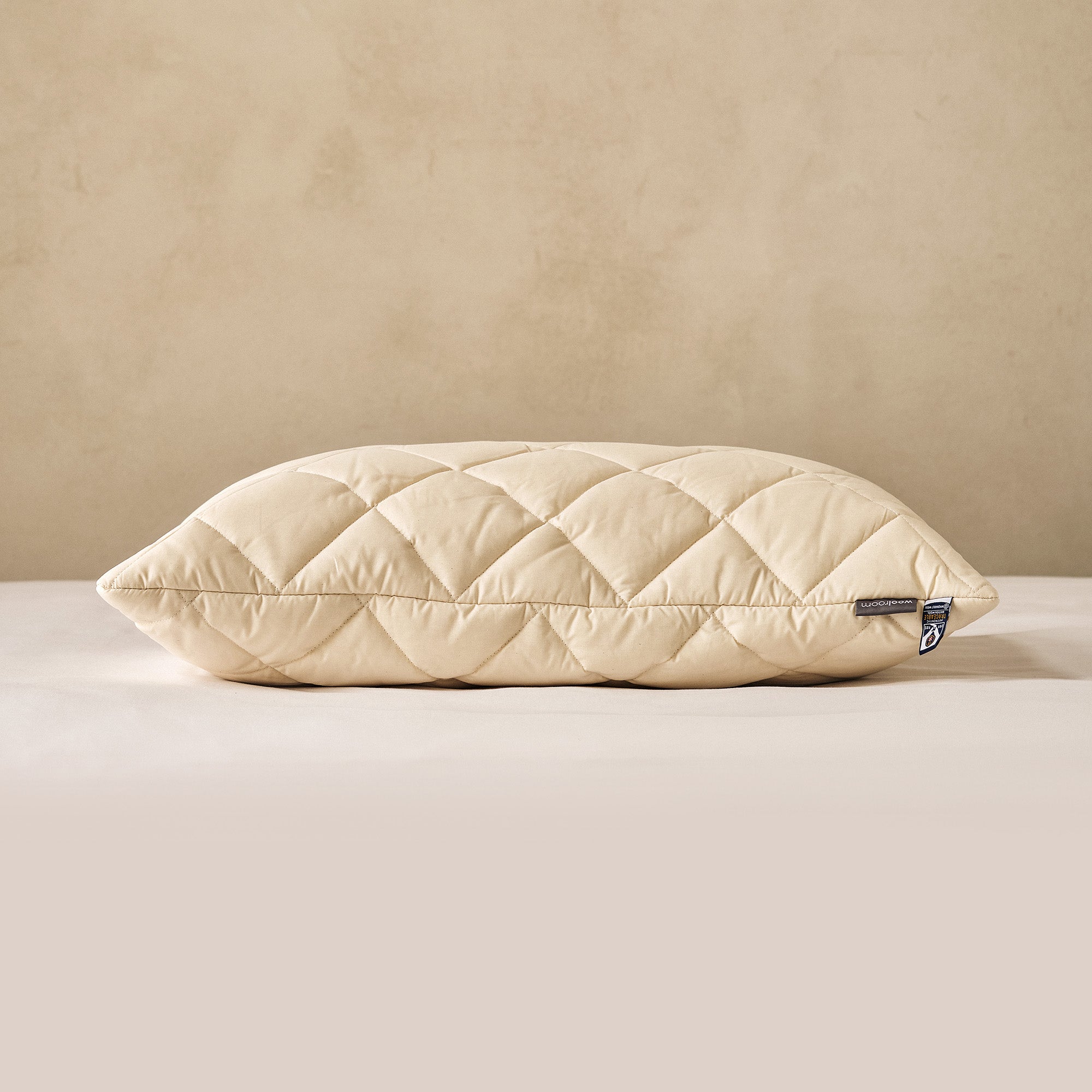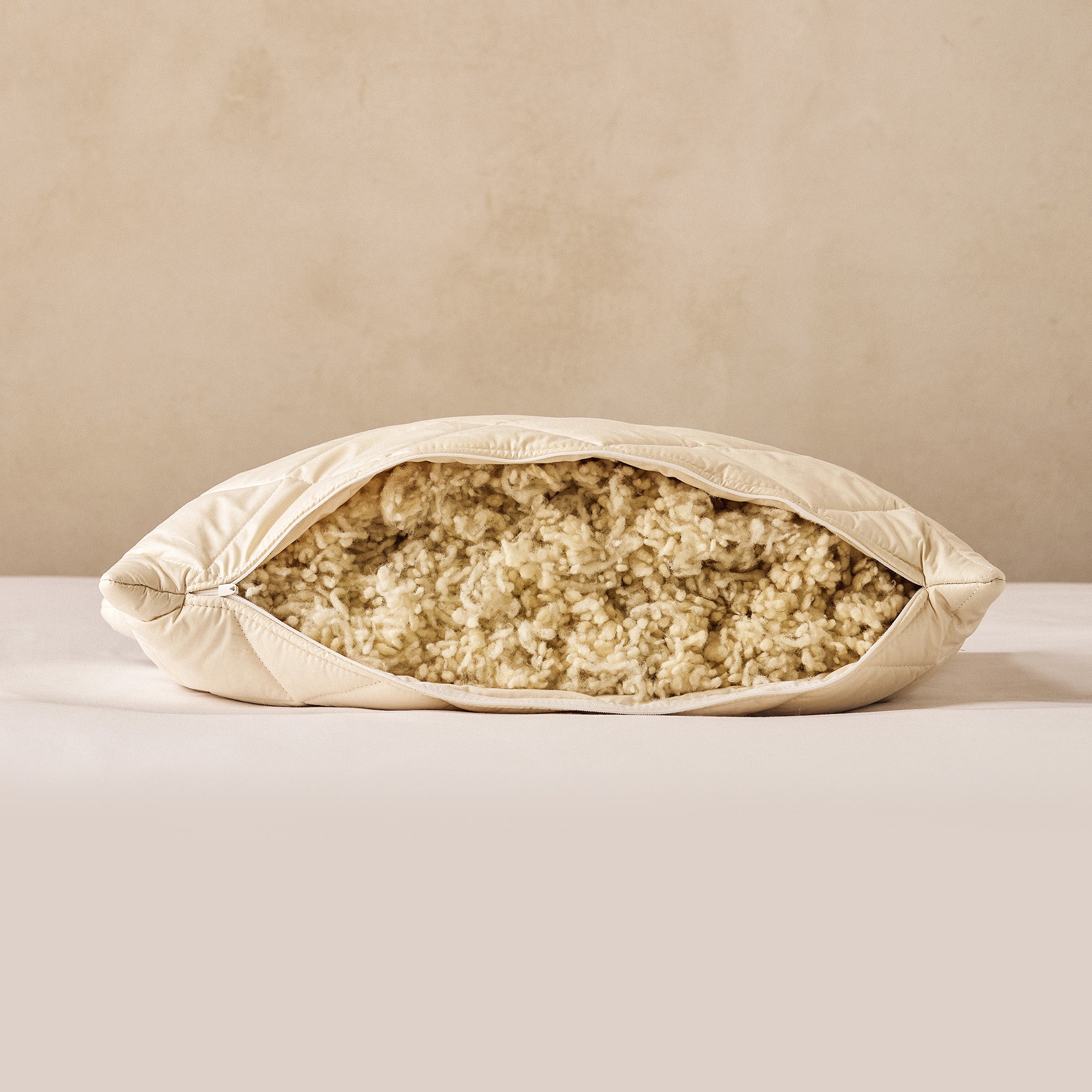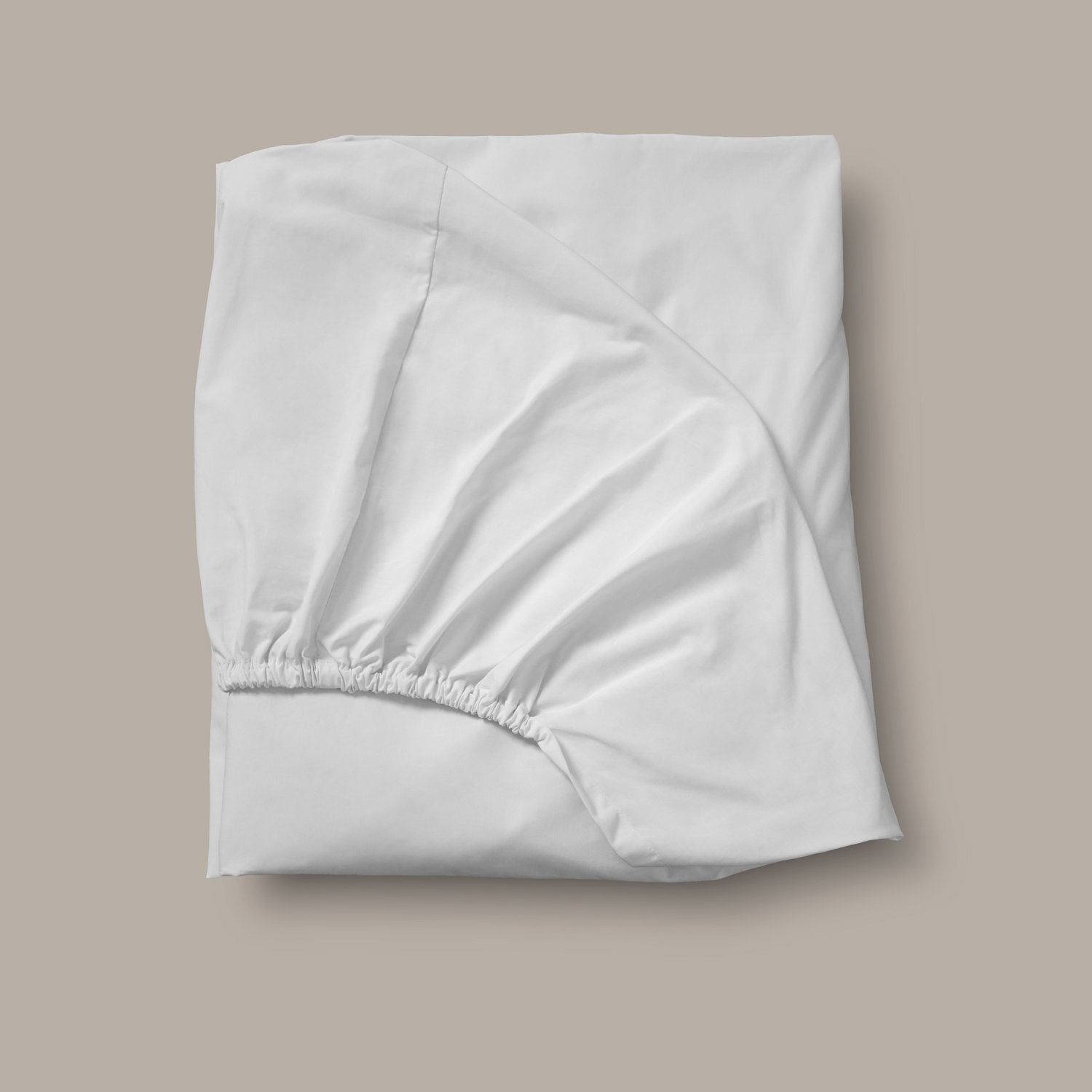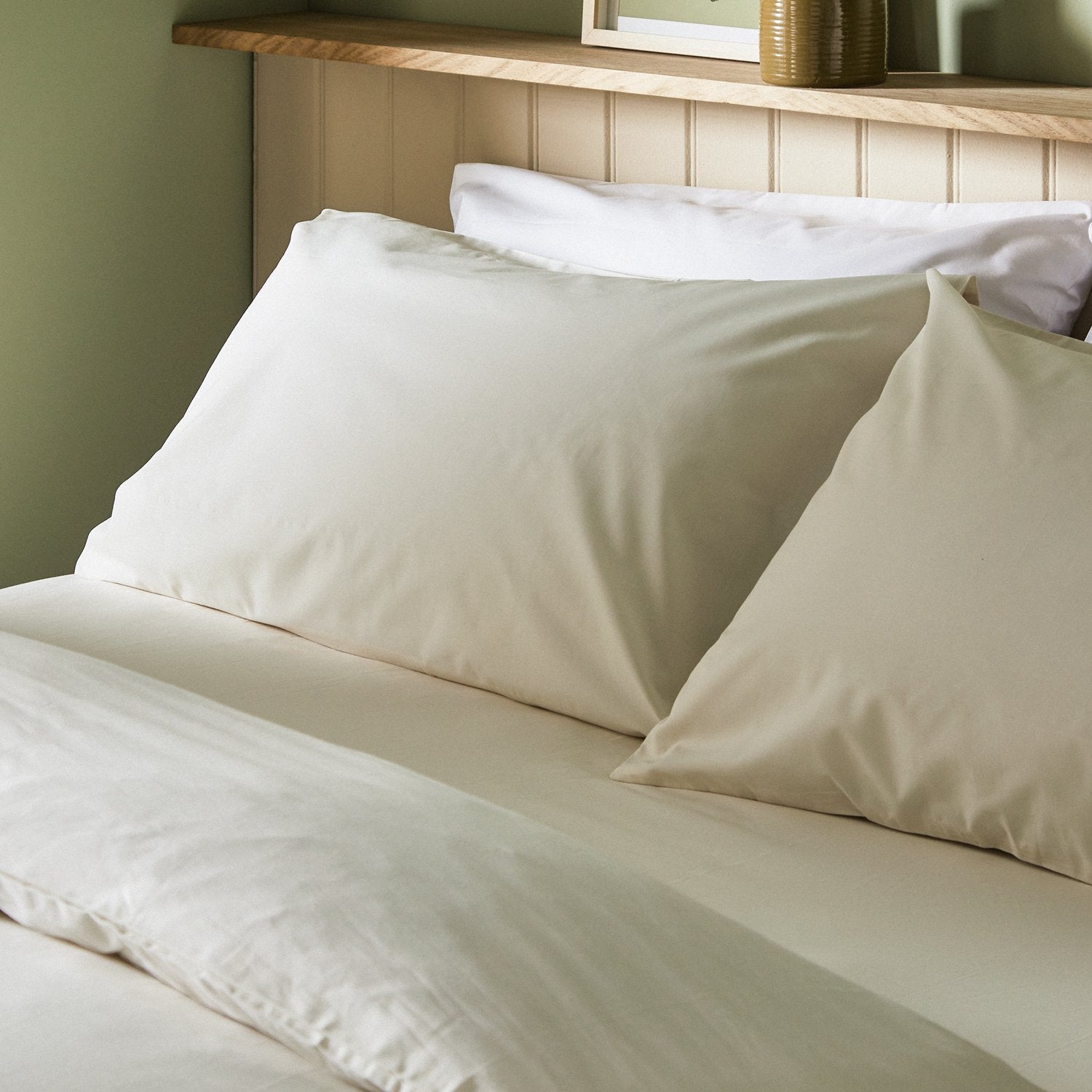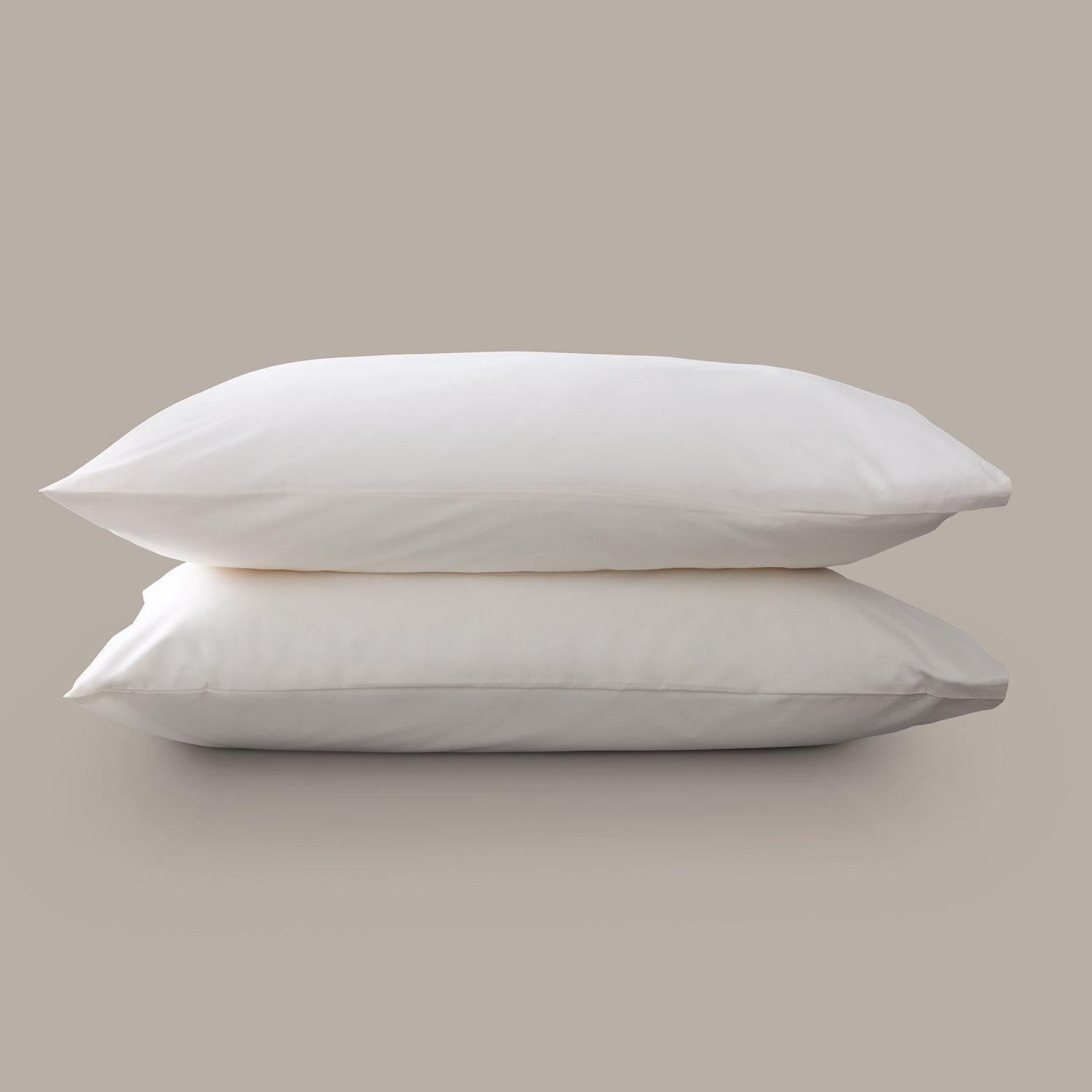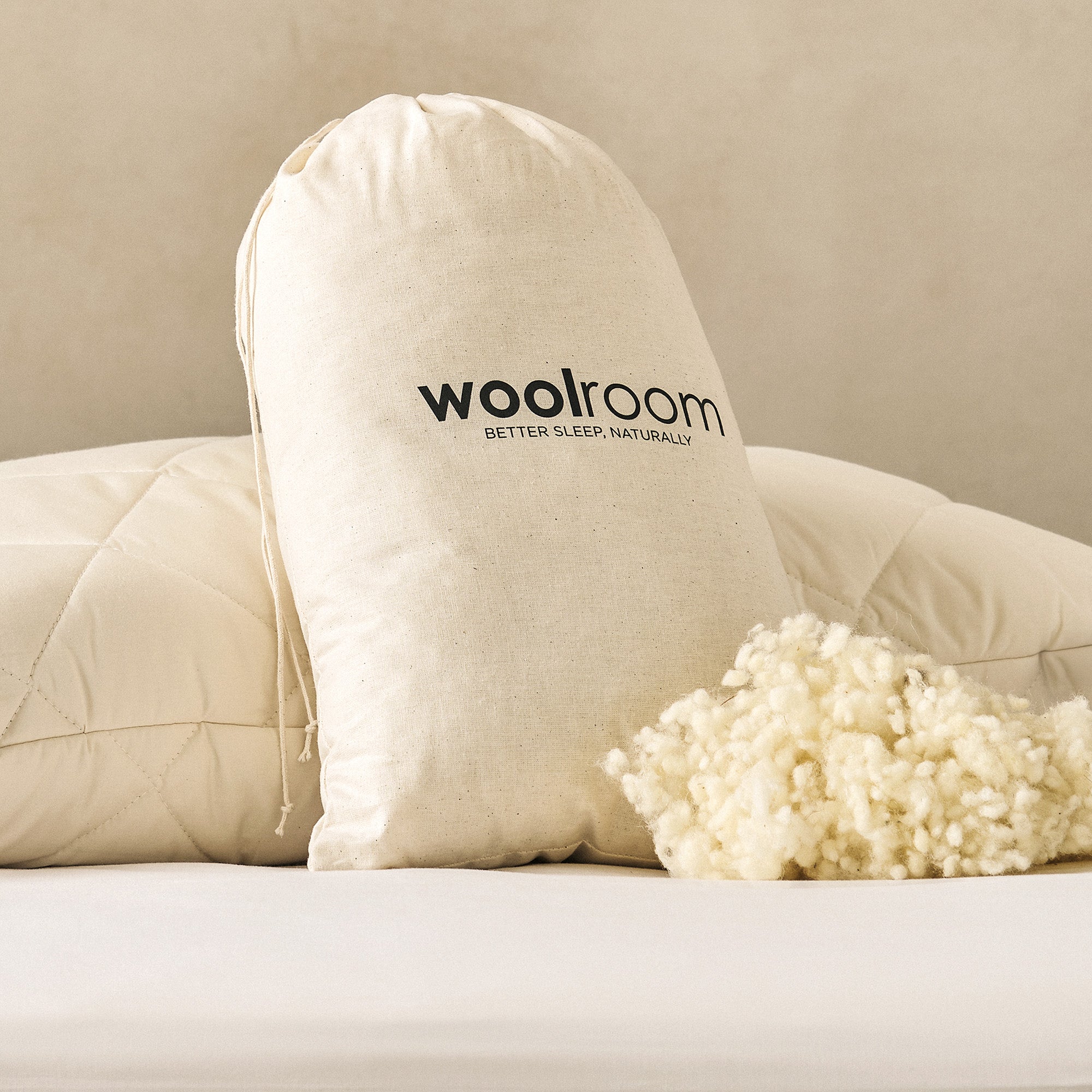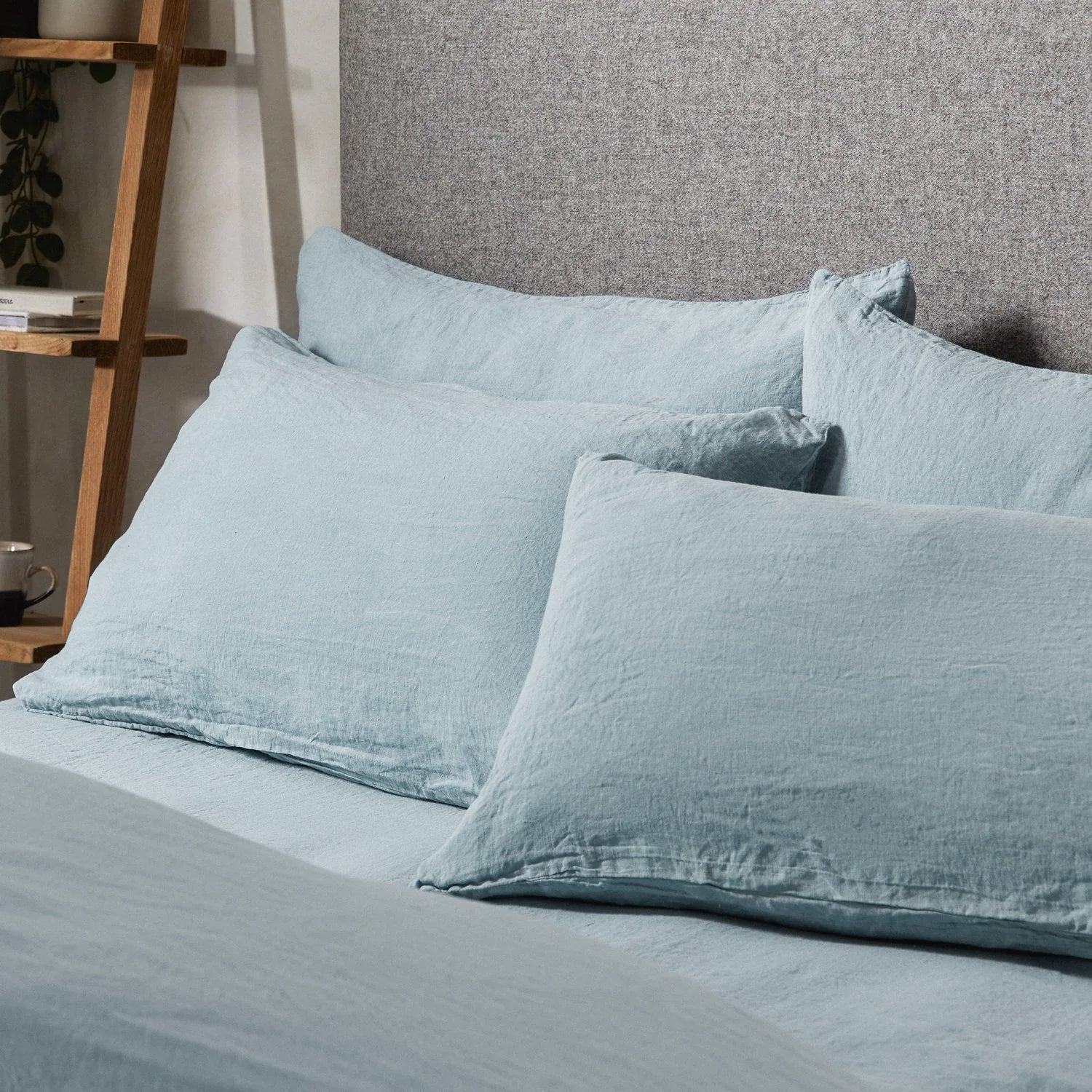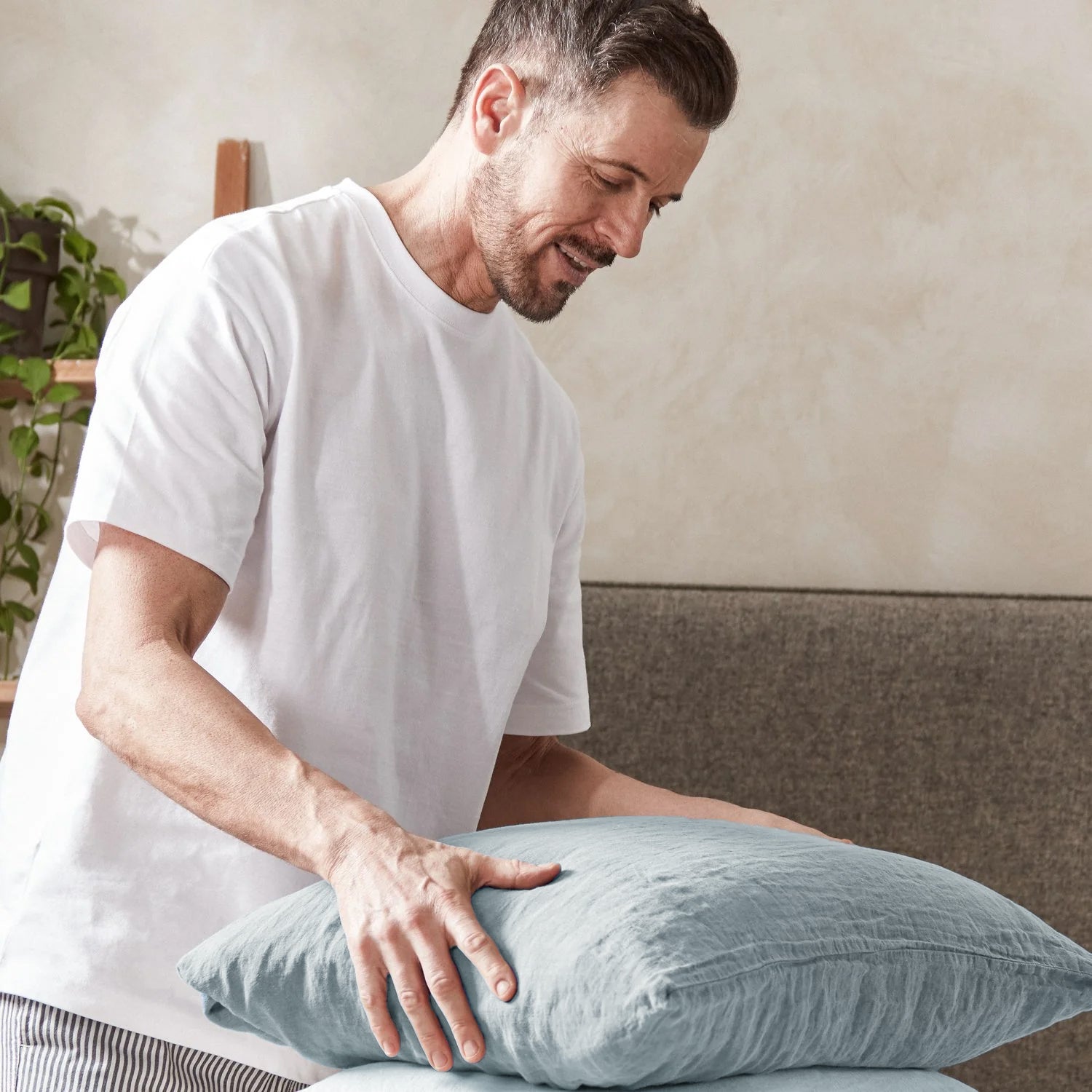A good night’s sleep hinges on specific factors, and temperature is one of them. While overheating at night might seem fairly unavoidable in the dog days of summer, your direct sleep environment—like your mattress and choice of bedding—can make you restless and sweaty even during cooler months.
Fortunately, the opposite is also true. Taking steps to optimize your sleep temperature can be the ticket to cooler, more comfortable, more restful nights—and it’s probably easier than you think. To help you get the sleep you need, we're sharing five simple ways to beat the heat for better sleep.
How Sleep Temperature Impacts Sleep Quality
Thanks to the circadian rhythm, the act of sleeping is more complex than it appears. Light, sound, and yes, temperature, directly affect our sleep stages—for better and for worse. Body temperature naturally fluctuates before and during sleep, keeping pace with the sleep-wake cycle. In the evening, when it’s beginning to get dark, our bodies start releasing melatonin, the hormone that makes us feel sleepy. At the same time, our core body temperature naturally begins to dip in preparation for sleep, and it stays that way until the early morning. That's when we experience a rise in body temperature in anticipation of waking.
A key factor in this natural process of thermoregulation? Peripheral skin temperature. And as you’ve probably guessed, both warm and cold environments can wreak havoc on your ability to maintain a comfortable sleep temperature. A bed that traps heat, for example, can increase your body temperature too much. The same is true of synthetic bed sheets or a stuffy room with no airflow. In all cases, you're looking at a scenario that’s likely to wake you up feeling sweaty, disoriented, and way too hot to fall back to sleep easily.
The problem with night-time wake-ups like this is that it decreases time spent in deep sleep and REM sleep, both of which are critical for your health. Managing temperature while you sleep, then, isn’t just about keeping you comfortable—it’s about ensuring you get the good sleep you need to be healthy.
What Causes Overheating At Night?
There are a lot of reasons you might be overheating at bedtime and during the night. Some are medical, like a diagnosed sleep disorder, a hormonal imbalance, or an illness, and are best addressed with a healthcare professional. But other reasons for overheating at night are entirely environmental or even an inadvertent lifestyle choice.
Your mattress is a prime suspect. All-foam constructions and synthetic materials like memory foam have a tendency to trap body heat, driving up your core temperature and contributing to restless nights. Mattresses that retain heat can sleep especially warm if you share the bed with a partner or pet.
Your choice of bedding and sleepwear could also be an issue, since synthetic fabrics don’t breathe as well as their naturally derived counterparts, which lets moisture accumulate. If you routinely wake up with night sweats, take a good, hard look at your bedsheets.
Pre-bedtime activities are another possibility for elevated body temperature at night. A strenuous workout, too much caffeine too late in the day, and even stress can all contribute to an uptick in core body temperature.
The most effective way to combat overheating at night, then, is to spend some time thinking through potential causes and taking steps to address them directly.

Simple Tips to Beat The Heat for Better Sleep
While you’ll need to address lifestyle habits that could be contributing to overheating at night, like when you exercise and how you manage stress, creating a sleep environment that supports thermoregulation is key. Here’s what to consider for cooler nights.
Manage Your Bedroom’s Temperature
Experts generally advise that 65 degrees Fahrenheit (18.3 degrees Celsius) is an ideal room temperature for sleep. That number may tick a few degrees up or down depending on personal needs and preferences. You may need to adjust the thermostat or air conditioning to ensure your bedroom temperature is conducive to sleep.
Don’t overlook proper ventilation, either. A closed, stagnant space with no airflow is likely to push your body temperature up and contribute to night sweats. Before bed, try to get air circulating through your home and certainly your bedroom. That might mean cracking a few windows, propping open doors, or running a fan to create a cool breeze. The more cool air that can circulate through the house, the better.
Some bedrooms tend to get a lot of sunlight in the late afternoon. If you’ve noticed that your room holds onto heat when you’re ready for bed, try drawing the curtains early to cut down on the amount of ambient heat. And don’t overlook the humidity factor! It’s not the easiest thing to manage, but if your local climate has high humidity, it may be worth investing in a dehumidifier to make your bedroom more comfortable.
Upgrade Your Mattress And Bedding (And Think Wool!)
It seems counterintuitive, but wool is one of the coolest fibers you can buy. In fact, our wool bedding is scientifically proven to regulate your body temperature and manage excess moisture, so it keeps you comfortable all year round. That makes it ideal both in the comfort layers of a breathable mattress and in individual bedding items.
If investing in an entirely new mattress just isn’t in the budget right now, a wool mattress pad or mattress topper could do the trick. Even a thin layer of wool between you and your heat-trapping mattress can be wonderfully temperature regulating and promote a little airflow to combat hot nights.
If you’re currently sleeping with a down duvet insert, keep in mind that down is an incredibly insulating material. In other words, it traps heat—that last thing you want if you’re prone to overheating. Switching to a wool-based setup supports your body’s natural thermoregulation process, which means your body temperature can fluctuate as it should. Check out our natural bedding bundle, which includes a duvet, mattress layer, and pillow(s), or just consider swapping out a single item at a time.
Aside from contributing to excessive heat, synthetic materials can aggravate nighttime allergies and they're not particularly eco-friendly. Upgrading to wool bedding contributes to a cleaner, more sustainable sleep environment.
Rethink Your Bed Linens
The fabric of your duvet cover, fitted sheet, and pillowcases are worth a close look, too. By opting for natural bed linens, like those made from linen and cotton, you’re ensuring ample breathability. Synthetic options are essentially made from plastic, which means they trap heat and moisture—a recipe for waking up feeling clammy and sweaty.
Switch To Pajamas Made With Natural Fibers
If you have linen sheets but sleep in polyester or nylon pajamas, overheating could still be an issue—especially if you're a naturally hot sleeper. Breathable, moisture-wicking pajamas are a must for maintaining a comfortable temperature and keeping you cool at night, so avoid synthetics completely.
If you prefer to sleep in the buff, it’s best to do so with cotton or linen sheets—any type of natural fiber that will wick moisture to keep you comfortable.
Hydrate Well Before Bed
Temperature regulation is hampered when you’re dehydrated, so set yourself up for success by downing a glass of water roughly half an hour before bed. Just avoid drinking too much or too close to bedtime to avoid a middle-of-the-night bathroom run.
It can also be helpful to keep a glass of water on your bedside table at night too. If you wake up feeling hot, a sip or two can help cool you down.

The Bottom Line: Sleeping Cool At Night
There are a lot of reasons people overheat at night. Most commonly, the issue is a bedroom that’s too warm or bedding and linens that don’t breathe well, trapping heat and moisture. Either way, the result is less restful sleep.
Evening activities, like very hot showers or a high-intensity workout just before bed, can also elevate your body temperature and make it hard to get comfortable for sleep. When the goal is sleeping cooler at night, don't overlook environmental and lifestyle factors that could inadvertently be contributing to hot, sweaty sleep.
The bottom line? Switching to natural wool bedding and promoting airflow in the bedroom can go a long way in supporting your body’s natural thermoregulation process for better sleep.



